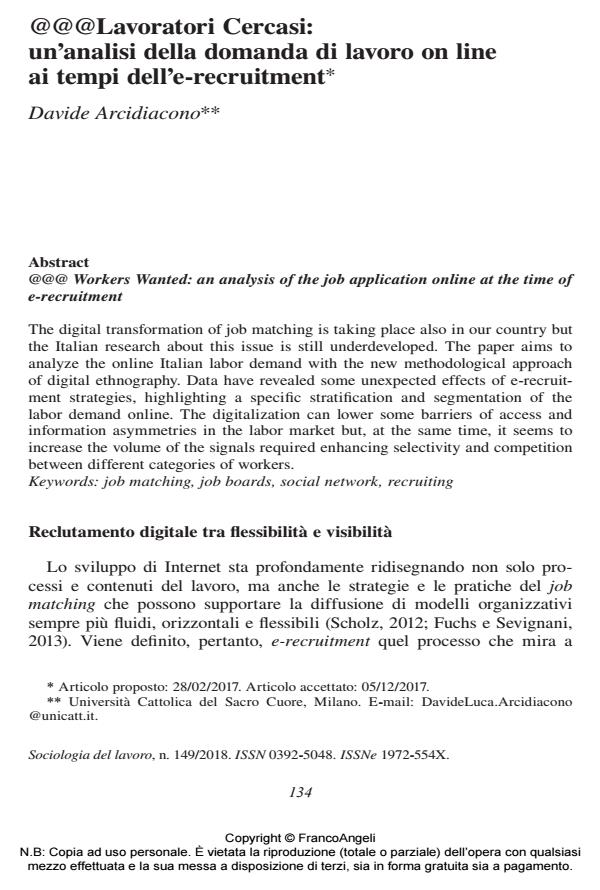@@@ Workers Wanted: an analysis of the job application online at the time of e-recruitment
Journal title SOCIOLOGIA DEL LAVORO
Author/s Davide Arcidiacono
Publishing Year 2018 Issue 2018/149
Language Italian Pages 22 P. 134-155 File size 259 KB
DOI 10.3280/SL2018-149009
DOI is like a bar code for intellectual property: to have more infomation
click here
Below, you can see the article first page
If you want to buy this article in PDF format, you can do it, following the instructions to buy download credits

FrancoAngeli is member of Publishers International Linking Association, Inc (PILA), a not-for-profit association which run the CrossRef service enabling links to and from online scholarly content.
The digital transformation of job matching is taking place also in our country but the Italian research about this issue is still underdeveloped. The paper aims to analyze the online Italian labor demand with the new methodological approach of digital ethnography. Data have revealed some unexpected effects of e-recruitment strategies, highlighting a specific stratification and segmentation of the labor demand online. The digitalization can lower some barriers of access and information asymmetries in the labor market but, at the same time, it seems to increase the volume of the signals required enhancing selectivity and competition between different categories of workers.
Keywords: Job matching, job boards, social network, recruiting
- Diversity and Inclusion in Italy Attila Bruni, pp.663 (ISBN:978-3-031-81937-7)
Davide Arcidiacono, @@@Lavoratori Cercasi: un’analisi della domanda di lavoro on line ai tempi dell’e-recruitment in "SOCIOLOGIA DEL LAVORO " 149/2018, pp 134-155, DOI: 10.3280/SL2018-149009